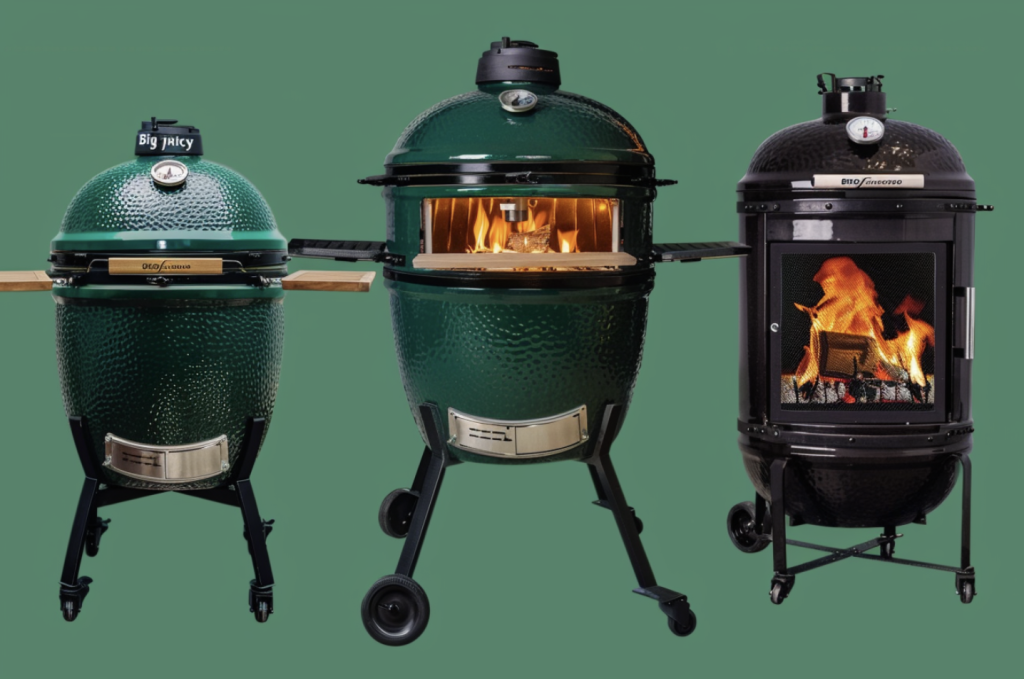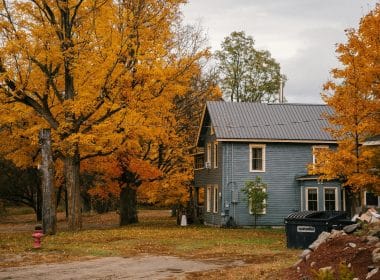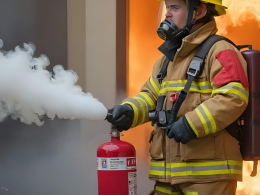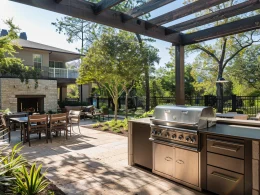When it comes to enjoying delicious grilled meals outdoors, placing your grill in the right location is crucial.
Many homeowners struggle with finding the perfect spot for their outdoor grill station, which can lead to safety hazards and less-than-ideal cooking experiences.
Fortunately, following a few key guidelines, you can create an inviting and functional outdoor grill station that will make your summer gatherings successful.
This article will explore the most important factors to consider when deciding where to place your grill, including safety, accessibility, and comfort.
By the end of this post, you’ll have all the information you need to create the perfect outdoor grill station for your backyard.
So, let’s dive in and discover the best location for your grill!
Steps and Practical Tips for Grill Placement
Now that you understand the key considerations for placing your grill outdoors, it’s time to put that knowledge into practice.
Follow these step-by-step instructions to find the perfect spot for your grill and prepare the area for safe and convenient use.
Step 1: Checking the Location
- Measure the distance: Use a tape measure to determine the distance from your chosen grill location to your home or any other structures. Ensure you have at least 10 feet of clearance to protect your property from heat damage.
- Assess the levelness: Place a level tool on the ground where you plan to put your grill. Check for any slopes or uneven spots. If necessary, make adjustments to the surface to ensure stability, such as adding pavers or creating a level platform.
Step 2: Preparing the Area
- Clear debris: Remove any leaves, twigs, loose stones, or other debris from the area surrounding your grill location. This will help prevent potential fire hazards and tripping accidents.
- Set up a protective grill mat: If using a protective mat, lay it down on the surface before placing your grill. Make sure the mat is centered and flat to provide a stable base.
- Install windshields: If your location is prone to wind, set up a windshield or position your grill near a natural windbreak, such as a wall or hedge. This will help maintain consistent temperatures and prevent flare-ups.
Step 3: Accessibility Enhancements
- Create clear pathways: Remove any obstacles, like potted plants or lawn furniture, that could hinder your movement while carrying food or supplies to and from your grill. If necessary, create a dedicated pathway using stepping stones or pavers.
- Ensure adequate lighting: For evening cookouts, install outdoor lighting or place portable lanterns around your grill area. This will provide sufficient illumination for safe cooking and movement.
- Keep essential tools nearby: Set up a small table or shelf near your grill to keep essential tools, such as tongs, spatulas, and grill brushes, within easy reach. This will save you trips back and forth to the kitchen.
Considerations for Outdoor Grill Placement
Several key factors should be considered when choosing the ideal spot for your outdoor grill. These considerations will help ensure your grilling experience is safe, enjoyable, and convenient.
Type of Grill

The type of grill you own can impact its ideal placement.
Charcoal grills: Due to the smoke they produce, charcoal grills require more ventilation, so place them in a well-ventilated area away from windows and doors.
Gas grills: These grills need to be connected to a propane tank or natural gas line, so consider the location of these fuel sources when choosing a spot.
Electric grills: These grills require access to an electrical outlet, so ensure a properly grounded outlet is nearby.
Safety First
Safety should always be the top priority when placing your grill outdoors.
To prevent damage to your home or other structures, maintain a minimum distance of 10 feet between your grill and any buildings.
This clearance will protect your property from heat-related damage, such as melted siding or scorched wood.
Additionally, place your grill away from flammable materials, including low-hanging branches, wooden fences, and deck railings.
Environmental Factors
Consider the environment surrounding your grill placement.
Windbreaks, such as walls or hedges, can help shield your grill from strong gusts, making it easier to light and maintain a consistent temperature.
If you live in an area with frequent rain or harsh sunlight, look for coverage options like a pergola, awning, or umbrella to protect your grill and provide comfort while cooking.
Your grill placement may need to be adapted based on your area’s seasonal changes and weather conditions.
During the hot summer months, place your grill in a shaded area to keep the temperature around the grill more comfortable.
In colder months, you may want to move your grill closer to your home for convenience but maintain a safe distance.
If you live in a region prone to heavy rain or snow, consider investing in a grill cover or shelter to protect your grill when not in use.
Accessibility
To ensure you use your grill frequently, choose a location easily accessible from your kitchen or back door.
This will make transporting food, utensils, and other grilling essentials convenient.
Also, consider the visibility of your grill from inside your house. Keeping an eye on your grill while preparing different dishes or entertaining guests can be very helpful.
Surface and Stability
Always place your grill on a flat, stable surface to prevent accidental tipping and ensure even cooking. Concrete, patio stones, or bricks are ideal grilling surfaces.
Consider using a protective grill mat if you have a wooden deck or other surface that you want to protect from grease splatters and heat.
These heat-resistant mats create a barrier between your grill and the surface, preventing damage and making cleanup easier.
Legal and Safety Regulations
Before finalizing your grill placement, familiarize yourself with local fire codes and safety guidelines.
Some municipalities have specific regulations regarding outdoor grills, such as minimum distances from buildings or restrictions on grilling on balconies or multi-unit dwellings.
Homeowners’ associations may also have rules governing the placement and use of outdoor grills.
Always adhere to these regulations to ensure the safety of your home and community.
Conclusion
Placing your outdoor grill in the right location is essential for creating a safe, convenient, and enjoyable grilling experience.
By considering key factors such as safety, environmental conditions, accessibility, and stability, you can ensure that your grill is perfectly positioned for optimal use.
To make your grilling setup even more functional, follow practical tips like measuring clearance distances, preparing the area, and enhancing accessibility.
Also, consider special considerations based on your grill type, weather conditions, and local regulations.
With these guidelines in mind, you’ll be well on creating the perfect outdoor grill station to center your backyard gatherings.
So fire up the grill, invite your friends and family, and enjoy the delicious taste of perfectly grilled meals all season long!











